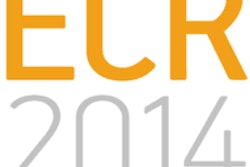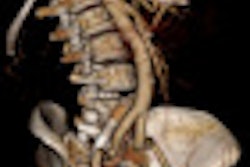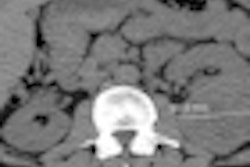Even patients with advanced kidney disease can steer clear of contrast-induced nephropathy (CIN) if given plenty of hydration, say researchers from the Netherlands. Results from the study of nearly 1,000 patients with stage 3 or 4 kidney disease were published in the June issue of Radiology.
The study found that fewer than 2.5% of the patients examined developed CIN when current guidelines emphasizing hydration were followed, according to the researchers from Radboud University Nijmegen Medical Centre in the Netherlands. The study also found that heart failure, low body mass index, and repeat contrast administration were associated with CIN.
CIN is the third most common cause of acute renal failure in hospitalized patients, and while most cases are limited to mild and transient impairment of renal function, serious morbidity and mortality, as well as longer hospital stays, can occur.
"In current practice, hydration is considered the preventive method of choice; however, evidence supporting its use is limited," wrote Dr. Corinne Balemans and colleagues. Previous studies have relied on a variety of hydration protocols that were often used inconsistently (Radiology, June 2012, Vol. 263:3 pp. 706-713).
Balemans and colleagues aimed to determine risk factors associated with CIN by evaluating its incidence in patients with an estimated glomerular filtration rate (eGFR) of less than 60 mL/min/1.73 m2 who received iodinated contrast media intravenously and were treated using current guidelines.
Current CIN guidelines developed in Europe and the U.S. emphasize the identification of patients at high risk for CIN and the use of hydration as a preventive measure, either using normal saline or sodium bicarbonate as an alternative option, they wrote.
In the study, patients with renal insufficiency were evaluated at a special outpatient clinic where CIN was assessed and normal saline hydration was prescribed (Centraal Begeleidings Orgaan guidelines, 2007), with renal function assessed after the procedures.
The researchers stratified all patients with eGFR less than 60 mL/min/1.73 m2 for risk of CIN; those at high risk based on absolute GFR and risk factors were hydrated with 1,000 mL of isotonic saline before and after contrast injection. Serum creatinine was measured three to five days later, and CIN was defined as an increase of 25% or more from baseline. Finally, the authors recorded and compared risk factors between patients with CIN and those without using stepwise multiple logistic regression analysis.
The study included 747 patients (43% female; mean age, 71.3 years ± 10) who underwent 944 procedures. Patients were hydrated in 511 (54.1%) procedures. CIN developed after 23 procedures (2.4%).
Independent predictors of CIN were heart failure (odds ratio, 3.0), body mass index (BMI) (odds ratio, 0.9), and repeated contrast material administration (odds ratio, 2.8), Balemans and colleagues wrote. No patients needed dialysis.
The population was carefully prepared before iodinated contrast injection, and only 7.7% of patients at high risk for CIN did not receive hydration.
"Our study provides reliable estimates of CIN and shows that the incidence of CIN is low in a homogeneous population of patients with stage 3 or 4 chronic kidney disease who underwent treatment in accordance with existing guidelines and who received intravenous iodinated contrast material," the authors wrote.
In the study, money was saved by restricting hydration to about half of the study population; patients at high risk for CIN were hydrated, whereas those at low risk were not. However, it's possible the incidence could have been reduced further by a less restrictive policy.
Regarding heart failure, a well-known risk factor for CIN, such patients may have more severe atherosclerotic vascular disease and are more prone to hemodynamic changes during and after procedures. For them, hydration may not be helpful, the authors wrote.
The inverse association between BMI and CIN may not have been reported previously, they noted. Patients with low BMI usually have a lower percentage of muscle mass, and as a result the formulas used to calculate eGFR overestimate renal function, Balemans and colleagues wrote.
Another study reported the association between repeat contrast exposure and CIN. In that study (Trivedi and Foley), the increased risk was even notable in patients with preserved renal function.
As for study limitations, the population was large but the number of events was small. Absolute GFR was used to classify risk, and there is debate about whether GFR should be corrected for body surface area.
The incidence of CIN in patients with stage 3 or 4 chronic kidney disease is low when treated in accordance with current guidelines, the authors concluded.
"Our findings support the efficacy of hydration regimens," they wrote. "The risk of CIN is increased in patients with heart failure, low BMI, and repeated contrast material administration. These risk factors need to be validated in future studies."



















